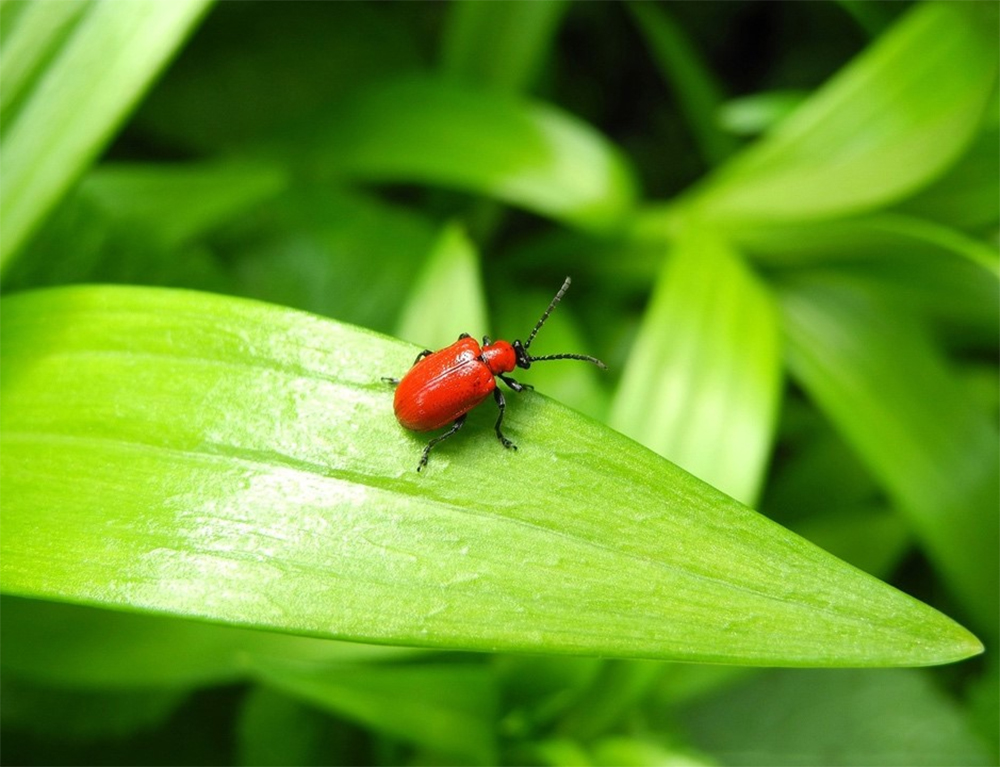Is Saskatchewan’s provincial flower — the prairie lily — under attack?
It could be, depending on the proliferation of an invasive foreign insect known as the red lily beetle.
The bright-red beetle has been spotted in various locations across the province this year and can pose a significant threat to cultivated and native lily species, including Saskatchewan’s iconic prairie lily, the province’s floral emblem.
Gardeners have reported sightings of the bright red insect in various communities, including Prince Albert and Saskatoon.
Provincial entomologist James Tansey said reports of the insect are widespread this year.
Read Also

Farming Smarter receives financial boost from Alberta government for potato research
Farming Smarter near Lethbridge got a boost to its research equipment, thanks to the Alberta government’s increase in funding for research associations.
A parasitic insect species that attacks the beetle’s larvae has been introduced in Alberta but it remains to be seen if the parasite is having any impact on controlling beetle numbers in Saskatchewan, Tansey said.
The beetle is a voracious feeder that can pose a serious threat to gardens, green spaces and native lily species.
“There’s really no mistaking it,” said Tansey.
“It’s really a bright ketchup red, whereas a ladybird beetle (or ladybug) is a little bit more subdued — a little bit more orangey-red.”
“It’s an invasive … leaf beetle that attacks lily species, including the prairie lily,” Tansy added.
“I would consider it, economically to be maybe not such a big deal but ecologically, yes, it’s a big deal.”
Tansey said his phone has been ringing constantly this summer with reports from concerned gardeners.
The beetle gained attention through a local television news report earlier in the year.
Since then, awareness and reports of the bug has sky-rocketed.
Adult beetles are six to eight millimetres long and are easy to spot because of their brilliant red body colour.
They have a black head, black legs and black under-side. They have long antennae and their bodies narrow sharply at the shoulder.
Larvae have yellow or orange bodies with black heads and are covered in a slimy black fecal material that makes them look like bird droppings.
The beetles originated in Eurasia and were first documented in Canada in the early 1940s.
Researchers believe they first arrived in Montreal and have slowly spread from there across Canada.
Their presence in Western Canada is fairly recent but their numbers appear to be growing.
According to the City of Calgary, where the insect has been established for years, adult beetles are strong fliers that can move quickly to wherever a suitable host plant population exists.
The beetles are also believed to be well-adapted to native lily species.
Tansy said it’s likely that the insect arrived in Canada in a shipment of infected bulbs.
Parasitoids that were released in Alberta in 2018 are believed to be having some positive impact in controlling beetle populations in that province.
Gardeners concerned about the beetles can hand-pick adults in the spring and monitor for larval activity throughout the summer.
An adult female can lay as many as 450 eggs in a single growing season.
Eggs are typically laid in batches of 12 on the undersides of leaves.
The eggs hatch into larvae in one to two weeks and larvae feed for three to four weeks, with feeding activity typically focused on the undersides of lily leaves or at the nodes, where the leave and stem meet.
Mature larvae burrow into the ground to pupate and emerge as adults in about 20 days to continue feeding until freeze-up.
Diatomaceous earth can be used to control emerging adults.
brian.cross@producer.com


















